
-
Find the right food for your pet
Take this quiz to see which food may be the best for your furry friend.
Find the right food for your pet
Take this quiz to see which food may be the best for your furry friend.
Featured products
 Adult Perfect Weight & Joint Support Chicken Recipe Dry Dog Food
Adult Perfect Weight & Joint Support Chicken Recipe Dry Dog FoodThis weight management and mobility support dog food was created with Hill’s unique understanding of the biology of overweight dogs.
Shop Now Adult 7+ No Corn, Wheat, Soy Chicken & Brown Rice Dog Food
Adult 7+ No Corn, Wheat, Soy Chicken & Brown Rice Dog FoodSupports energy level and beautiful coat in mature dogs
Shop Now Adult 7+ Perfect Digestion Chicken, Whole Oats & Brown Rice Recipe Dog Food
Adult 7+ Perfect Digestion Chicken, Whole Oats & Brown Rice Recipe Dog FoodScience Diet's breakthrough nutrition supports ultimate digestive well-being & healthy microbiome for dogs age 7+
Shop NowFeatured products
 Adult Perfect Digestion Chicken, Barley & Whole Oats Recipe Cat Food
Adult Perfect Digestion Chicken, Barley & Whole Oats Recipe Cat FoodScience Diet's breakthrough nutrition supports ultimate digestive well-being & healthy microbiome
Shop Now Perfect Weight Salmon & Vegetable Canned Cat Food
Perfect Weight Salmon & Vegetable Canned Cat FoodOver 70% of cats lost weight within 10 weeks when fed this nutrition
Shop Now Adult Savory Chicken Entrée Cat Food
Adult Savory Chicken Entrée Cat FoodPrecisely balanced nutrition with the delicious taste of savory minced chicken to help fuel the energy needs of cats during the prime of their life
Shop Now -
Dog
- Dog Tips & Articles
-
Health Category
- Weight
- Food & Environmental Sensitivities
- Urinary
- Digestive
- Joint
- Kidney
-
Life Stage
- Puppy Nutrition
- Adult Nutrition
- Senior Nutrition
Cat
- Cat Tips & Articles
-
Health Category
- Weight
- Skin & Food Sensitivities
- Urinary
- Digestive
- Kidney
-
Life Stage
- Kitten Nutrition
- Adult Nutrition
Featured articles
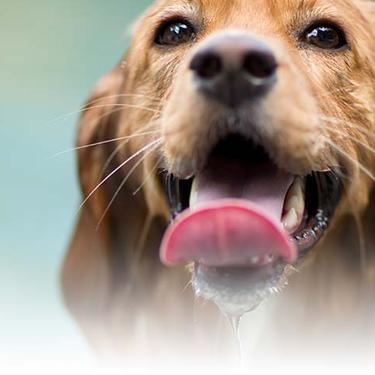 Water
WaterDiscover why water is the most important nutrient for your dog or cat to live a healthy life. Find out how much water your pet should consume each day.
Read More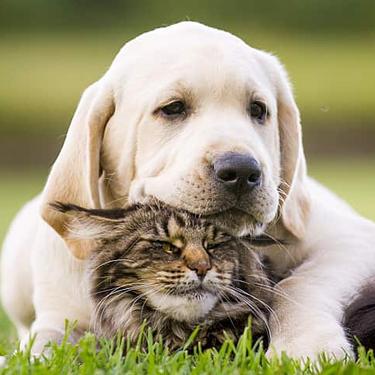 The Incredible Science Behind Your Pet's Microbiome
The Incredible Science Behind Your Pet's MicrobiomeLearn what a pet's microbiome is, how it contributes to your pet's gut & overall health, and why nutrition is important in maintaining healthy microbiomes.
Read More Pet Food Storage Tips
Pet Food Storage TipsDiscover how and where to store your dry, as well as canned, dog and cat food. Learn how to find the "best before" dates on all Hill's pet food packaging.
Read More -
Find the right food for your pet
Find the right food for your pet


If your pet seems to be called to chase anything with wheels, you might be left wondering, "Why do dogs chase cars?"
It's not like they can outrun them, and even if they could, how would they benefit from the end result? The behavior seems strange to say the least, but now you're curious. What causes a dog to chase cars? Let's take a closer look at what may be causing this behavior and how to stop a dog from chasing cars.
Why Do Dogs Chase Cars?
Although humans may not quite understand it, for dogs, chasing is an instinct. For dogs, moving vehicles may be an annoyance, a thrill or something else entirely, but one thing is for sure: It sparks that natural instinct in which a dog recognizes the vehicle as prey they must run after and capture.
And it's not just four-wheeled on-road vehicles, like cars or buses, that your dog might chase. There are other-wheeled vehicles that a dog might be just as motivated to follow, such as bikes, scooters or mopeds. Your dog may even chase people on Rollerblades or in wheelchairs!
Because chasing is a natural instinct, any type of dog breed may feel the drive to chase a car or other-wheeled form of transportation. However, the American Kennel Club (AKC) reports that sighthounds of all sizes and other herding breeds may be particularly driven to chase.
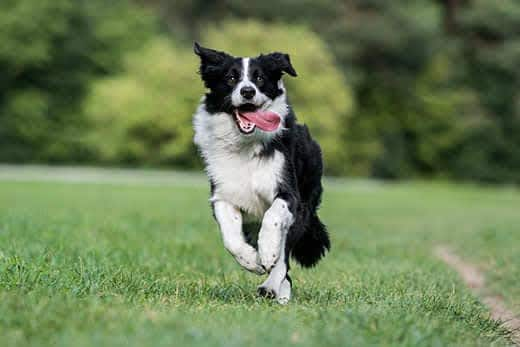
The Dangers of Chasing Cars
One of the most important things to keep in mind if your dog is chasing a moving vehicle on- or off-roads is that if they continue to chase, they might get hit. A collision could cause serious damage to your pet — damage that could potentially be life-threatening. If your dog is chasing and has problems with aggressive behavior, you also have to worry about your pet potentially attacking someone if they're able to catch up to them — like someone on Rollerblades who was simply skating by your property.


Tasty Tips
How to Stop a Dog from Chasing Cars
The good news is that you can train your dog not to chase cars or other forms of transportation. However, for some particularly chase-driven pets, the training may prove difficult. The AKC reports, "The desire to chase is inherent to many dogs and is a highly self-rewarding behavior ... Because some dogs enjoy it so much, it can be extra challenging to train them not to do it."
Still, this doesn't mean you should give up hope. Here are a few tips to train your pet on impulse control:
- Start training before the impulse strikes. It will be a lot harder to stop the behavior while it's happening than working in calm conditions first.
- Keep your dog on a leash and close to you during your training.
- Begin by teaching your dog the "stay" command.
- When your dog understands the command, introduce scenarios that challenge their impulse control, such as a member of the family on a skateboard or slowly backing out of the driveway while your dog continues to stay seated or lying down in a still position. This phase of training will take the most time. Here, you'll need to increase speed or exposure, all while maintaining safety and keeping your dog leashed and close to you.
If at all possible, consider working directly with a local dog trainer for maximum results in the safest environment.
So, why do dogs chase cars? The answer lies in natural evolution: They simply have the instinct to chase, and a quick-moving car appears just like their prey. Training your dog to stay immobile or by your side can help so that chasing cars becomes a thing of the past.


Erin Ollila believes in the power of words and how a message can inform—and even transform—its intended audience. Her writing can be found all over the internet and in print, and includes interviews, ghostwriting, blog posts, and creative nonfiction. Erin is a geek for SEO and all things social media. She graduated from Fairfield University with an M.F.A. in Creative Writing. Reach out to her on Twitter @ReinventingErin or learn more about her at http://erinollila.com.
Related products

Supports energy level and beautiful coat in mature dogs

This weight management and mobility support dog food was created with Hill’s unique understanding of the biology of overweight dogs.

Science Diet's breakthrough nutrition supports ultimate digestive well-being & healthy microbiome for dogs age 7+

Delicious braised beef paired with tender vegetables in a succulent stew
Related articles
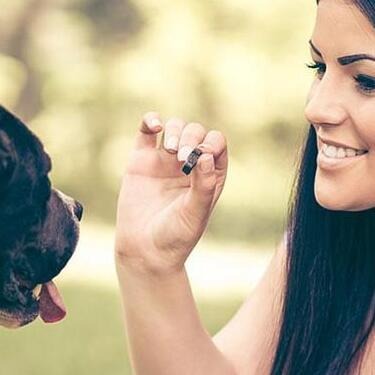
Proper nutrition for your pregnant or nursing dog is vital to her and her puppy's health. Learn what you should do provide her with the proper nutrients.
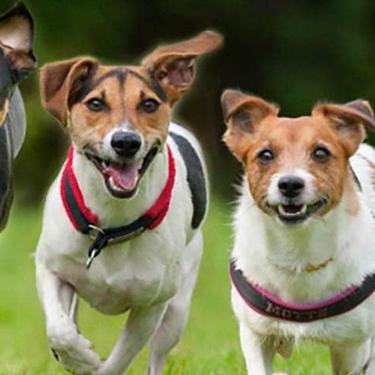
Understand the role that Omega-6 and Omega-3 fatty acids play in your dog's overall health, and how you can ensure they are getting enough.

Large and giant breed puppies have different nutritional needs than other dogs. Learn how to provide the special care they need to grow up big and strong.

Learn about Hill's puppy food and the nutritional benefit & high quality ingredients that it contains for your pup.

Put your dog on a diet without them knowing
Our low calorie formula helps you control your dog's weight. It's packed with high-quality protein for building lean muscles, and made with purposeful ingredients for a flavorful, nutritious meal. Clinically proven antioxidants, Vitamin C+E, help promote a healthy immune system.
Put your dog on a diet without them knowing
Our low calorie formula helps you control your dog's weight. It's packed with high-quality protein for building lean muscles, and made with purposeful ingredients for a flavorful, nutritious meal. Clinically proven antioxidants, Vitamin C+E, help promote a healthy immune system.

